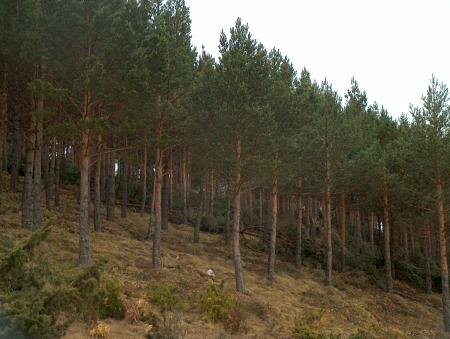
Objective:
In 2008, we installed 14 mushroom inventory plots of 100 m2 size in Pinus pinaster forests. The plots were selected to include a range of geographical features (altitude, slope, aspect) as well as variation in tree density and basal area in the conservation area of Poblet. A second set of plots were installed in 2009 paired to the first set of plots. The second set of plots was thinned removing 26 to 77% of the basal area. Mushroom yields were monitored on a weekly basis in the Autumn Season of the years 2008 to 2010 to analyze the effects of forest thinning on the yields of Lactarius delicious group.
Context:
The Spanish forest services promoted a policy of forest plantations, mainly with pine species, during the second part of the 20th century. Such plantations have been considered very productive in terms of mushroom yields, being the saffron milk caps, the most appreciated mushrooms. However, the lack of silvicultural interventions in the dense forests has provoked a gradual decrease in the Lactarius group deliciosus productions over the years. The open question is how to manage these pine forests in order to increase the yields of this highly valued mushroom.
Contacts:
José Antonio Bonet, jantonio.bonet@udl.cat, www.udl.cat
Juan Martínez de Aragón, mtzda@ctfc.es, www.ctfc.es
Sergio de-Miguel Magaña, sergio.demiguel@udl.cat, www.udl.cat
Further information:
BONET, J.A.; DE-MIGUEL, S.: MARTÍNEZ DE ARAGÓN, J.; PUKKALA, T.; PALAHI, M. 2012. “Immediate effect of thinning on the yield of Lactarius group deliciosus in Pinus pinaster forests in North-Eastern Spain”. Forest, Ecology and Management, 265: 211-217.